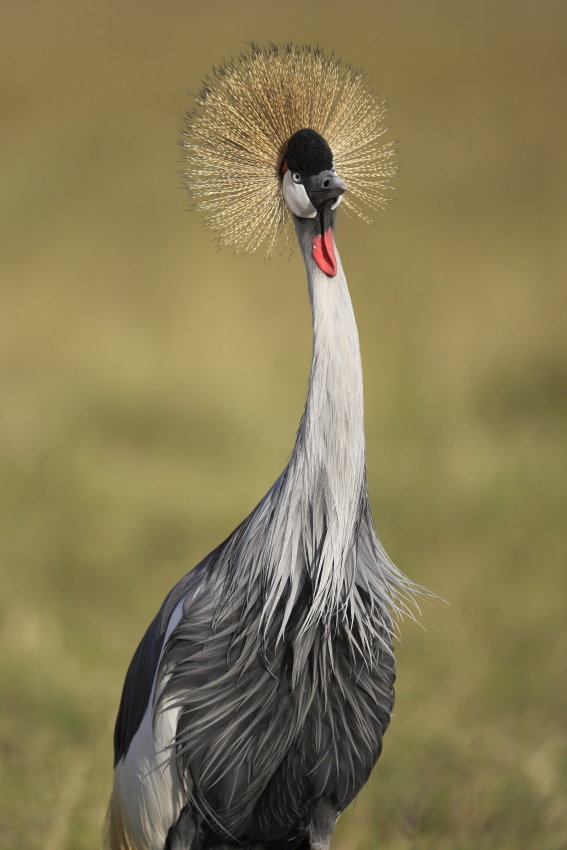 Photo@Tony Crocetta
Photo@Tony Crocetta
Grey Crowned Crane has a breeding display involving dancing, bowing, and jumping. It has a booming call which involves inflation of the red gular sac. It also makes a honking sound quite different from the trumpeting of other crane species. Both sexes dance, and immature birds join the adults. Dancing is an integral part of courtship, but also may be done at any time of the year.Its body plumage is mainly grey. The wings are also predominantly white, but contain feathers with a range of colours. The head has a crown of stiff golden feathers. The sides of the face are white, and there is a bright red inflatable throat pouch. The bill is relatively short and grey, and the legs are black. The have long legs for wading through the grasses. The feet are large, yet slender, adapted for balance rather than defense or grasping. The sexes are similar, although males tend to be slightly larger. Young birds are greyer than adults, with a feathered buff face.
In Kenya they are widespread in all wetlands and grassland field. They however, prefer breeding in Saiwa sawmp National Park in western Kenya and other high altitude wetland in Kenya.


